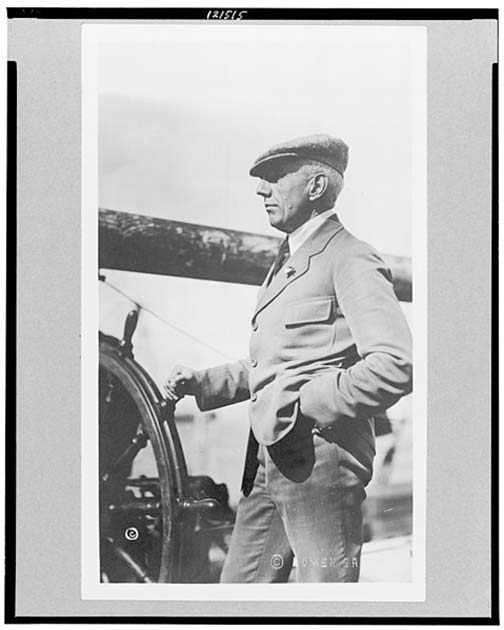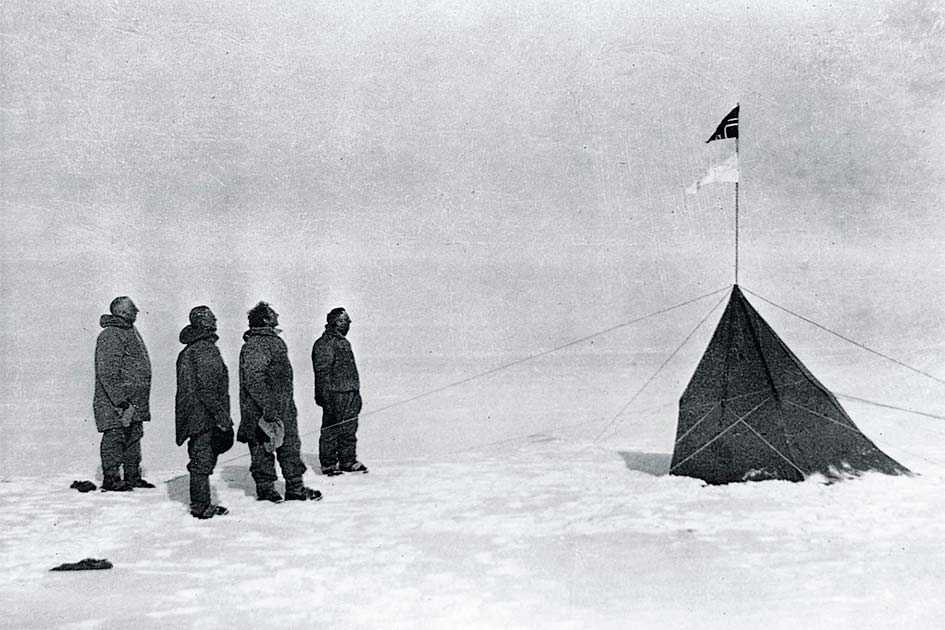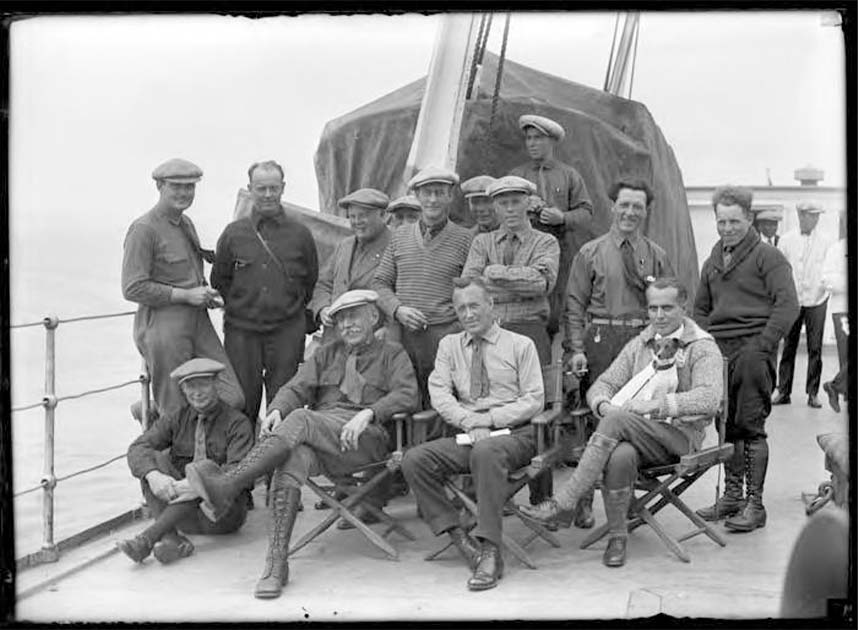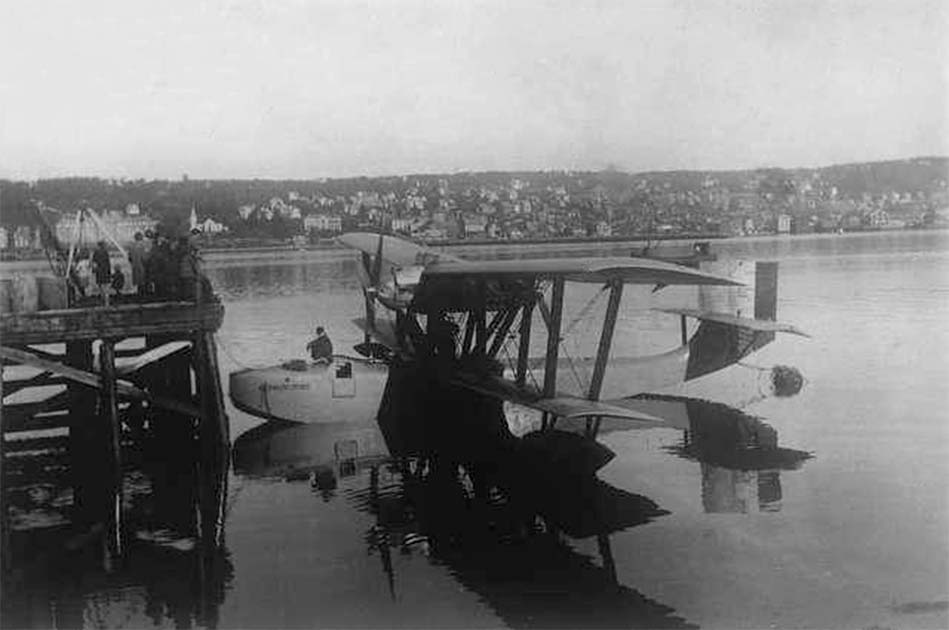In the realm of exploration, one name shines especially brightly, a testament to human resilience and unwavering ambition. Roald Amundsen, the Norwegian adventurer, etched his legacy as the first person to reach the South Pole.
Through meticulous planning and unyielding perseverance, he ventured into the frigid unknown, reshaping our understanding of Earth’s extremes. Yet, Amundsen’s audacity didn’t end there; he navigated the perilous Northwest Passage and set his sights on the elusive North Pole.
A true hero, Roald ultimately perished in an attempt to save another explorer. This is his story.
Who was Roald Amundsen?
Roald Amundsen was a famous Norwegian explorer during the early 19th century. He was born on 16 July 1872 in the town of Borge. His parents, Jens Amundsen and Hanna Sahlqvist were shipowners and Roald was their fourth son.
Hanna wanted Roald to avoid going into the family’s maritime trade and pushed her son to become a doctor. A doting son, Roald agreed and promised to go to University to study medicine. But he was keeping a secret from his mother, he had inherited his family’s thirst for adventure.
Roald’s mother died when he was 21 and he immediately dropped out of university so that he could pursue a life on the sea. Ever since he had been 15 years old and read the narratives of Sir John Franklin, all Roald had wanted to do was go on an Arctic expedition. As he described it later, “I read them with a fervid fascination which has shaped the whole course of my life.” Shape his life they did.

Roald is remembered as one of the pillars of the “Heroic Age of Antarctic Exploration.” His reputation began in 1897 when, just four years after his mother’s death, he served as first mate on Adrian de Gerlache’s Belgian Antarctic Expedition upon the RV Belgica.
That expedition would have been enough to turn most men away from a life of adventure. The ship became ice-locked just off Alexander Island, west of the Antarctic Peninsula, and the crew became the first explorers to overwinter in Antarctica. They were unprepared and only survived thanks to the efforts of the ship’s doctor who spent the winter hunting animals for food.
Northwest Passage and South Pole
Roald wasn’t put off though. Six years later he led the first successful expedition to travel Canada’s Northwest Passage (between the Atlantic and Pacific oceans). It began as a modest expedition of six men and a small fishing vessel powered by a 13-horsepower engine.
It was a long, arduous expedition. Roald and his men spent winters at King William Island, Gjoa Haven today. This period was a turning point in Roald’s career. He spent his time learning survival skills from the local Netsilik Inuits. The skills he learned from them, like using sled dogs and wearing animal skins rather than woolen parkas, were invaluable on his later expeditions.
In total his Northwest Passage expedition took Roald and his men three and a half years. Upon his return, he was elected to the American Antiquarian Society and was declared a hero of Norway by its new king, Haakon VII.
Roald next set his sights on the North Pole. It wasn’t easy raising funds however and in 1909 he received news that two rival explorers, Frederick Cook and Robert Peary, both claimed to have reached his next target.
Roald quickly changed his mind and decided to reroute his next expedition to the South Pole. He just neglected to inform his backers, including fellow explorer Robert F. Scott, who was planning his own expedition to the South in the coming months.
Roald’s expedition began on 3 June 1910 aboard the Fram. He didn’t inform his backers of his intentions until he reached Madeira, where he sent a telegram stating, “Beg to inform you Fram proceeding Antarctic – Amundsen”.

The race was on, and Roald was determined to beat Scott to the South Pole. The expedition’s first push towards the South Pole was led by a small group on 8 September of the same year. It was quickly abandoned due to extreme temperatures. Undeterred, a second team set out a month later on 19 October.
With four sleds and 52 dogs, the team headed along the Axel Heiberg Glacier, arriving at the Polar Plateau on 21 November. The team arrived at the Pole on 14 December, a month before Scott’s team. Roald named his South Pole camp Polheim and renamed the Antarctic Plateau King Haakon VII’s Plateau.
Knowing the trip back would be perilous they left a tent standing along with a note declaring their accomplishment, just in case they didn’t make it back. They arrived at some semblance of civilization on 25 January 1912 with their 11 surviving dogs. On the way, Roald had been forced to butcher many of the dogs for food.
Northeast Passage and the North Pole
Roald’s next set of expeditions wasn’t so successful. From 1918 onwards he spent four painful years aboard the Maud, attempting to explore the Northeast Passage and hopefully reach the North Pole. Unfortunately, nothing really went to plan.
The expedition suffered numerous setbacks. The Maud repeatedly became trapped in ice, costing Roald months of progress at a time. One particularly tough period was in 1919 when Roald broke his arm after being attacked by polar bears.
By mid-June 1922 Roald was ready to call it quits. He was running out of money and the Maud needed yet more repairs. He decided to change tact and try his hand at leading an aerial expedition over the North Pole.
His first aerial expedition was another failure. Roald and his pilot, Oskar Omdal of the Royal Norwegian Navy, were forced to turn back after their aircraft was damaged. He spent the next year traveling to America as a lecturer, raising funds for his next aerial expedition.

His next two expeditions were more successful. In 1925 he led two aircraft, the N-24 and N-25 Dornier Do J flying boats to the northernmost latitude ever reached in an aircraft at that time. Then in 1926, he led the first crossing of the Arctic in an airship, the Norge.
Death of A Hero
Sadly, Roald’s turn to aerial exploration is what ultimately led to his death. In 1928 Amundsen, along with five other crew members, embarked on a flight to search for the missing Italian explorer Umberto Nobile, who was presumed lost in the Arctic while attempting to reach the North Pole by airship.
Amundsen’s French Latham 47 seaplane aircraft departed from Tromsø, Norway, on June 18, 1928. However, due to adverse weather conditions and poor visibility, the aircraft was unable to locate Nobile’s airship. Tragically, Amundsen’s plane crashed somewhere in the Barents Sea, and all the crew members on board, including Amundsen, perished in the accident.

The exact circumstances surrounding the crash remain unclear, as the wreckage was never found. The search and rescue efforts were hindered by the harsh weather conditions and the remote location of the crash site. It wasn’t until several months later, in late August 1928, that some debris from the aircraft was discovered on the coast of northern Norway.
In 2004 and 2009 an unmanned submarine, operated by the Royal Norwegian Navy, was sent to find the wreckage of Roald’s plane. Unfortunately, they found no signs of his plane and it’s unlikely Roald will ever be found.
Roald Amundsen’s indomitable spirit blazed a trail of triumph across the frozen frontiers, leaving an indelible mark on the annals of exploration. His audacious expeditions to the South Pole, Northwest Passage, and his relentless pursuit of the North Pole highlighted his unwavering determination and meticulous planning.
Amundsen’s legacy serves as an inspiration, reminding us of the boundless human potential and the resilience of the human spirit in the face of daunting challenges. His expeditions not only expanded our knowledge of the polar regions but also highlighted the enduring spirit of exploration that continues to captivate our imaginations to this day.
Top Image: Roald Amundsen. Source: Unknown Author / Public Domain.